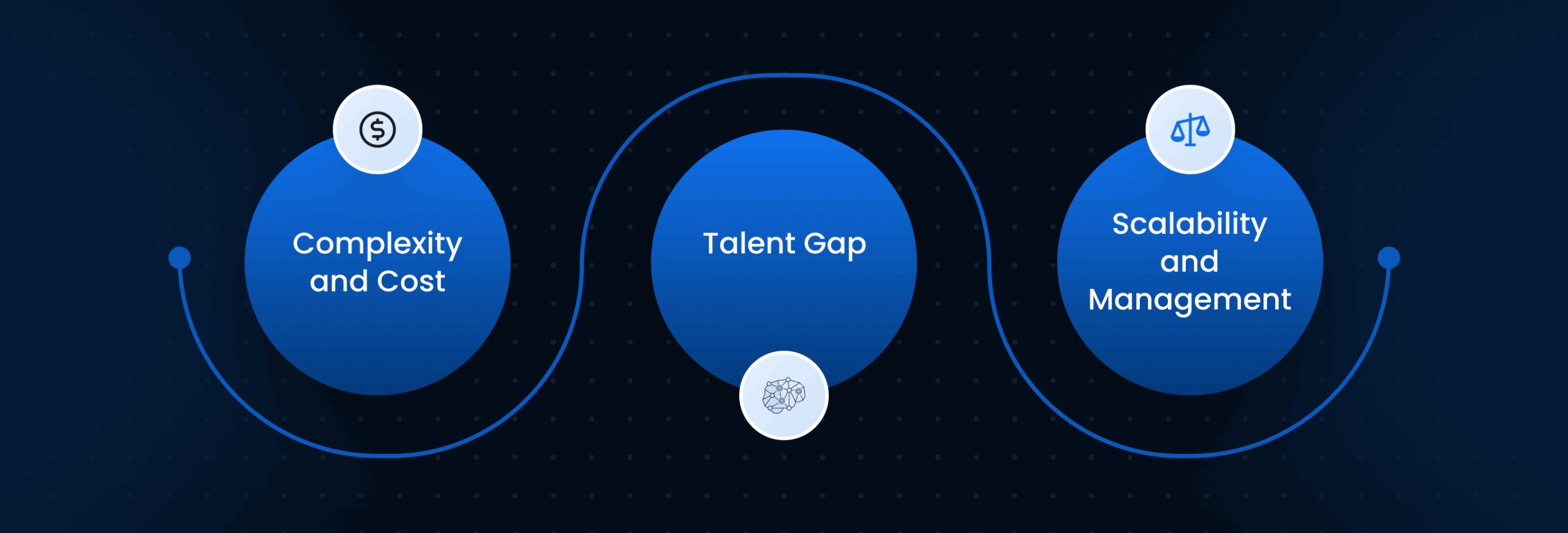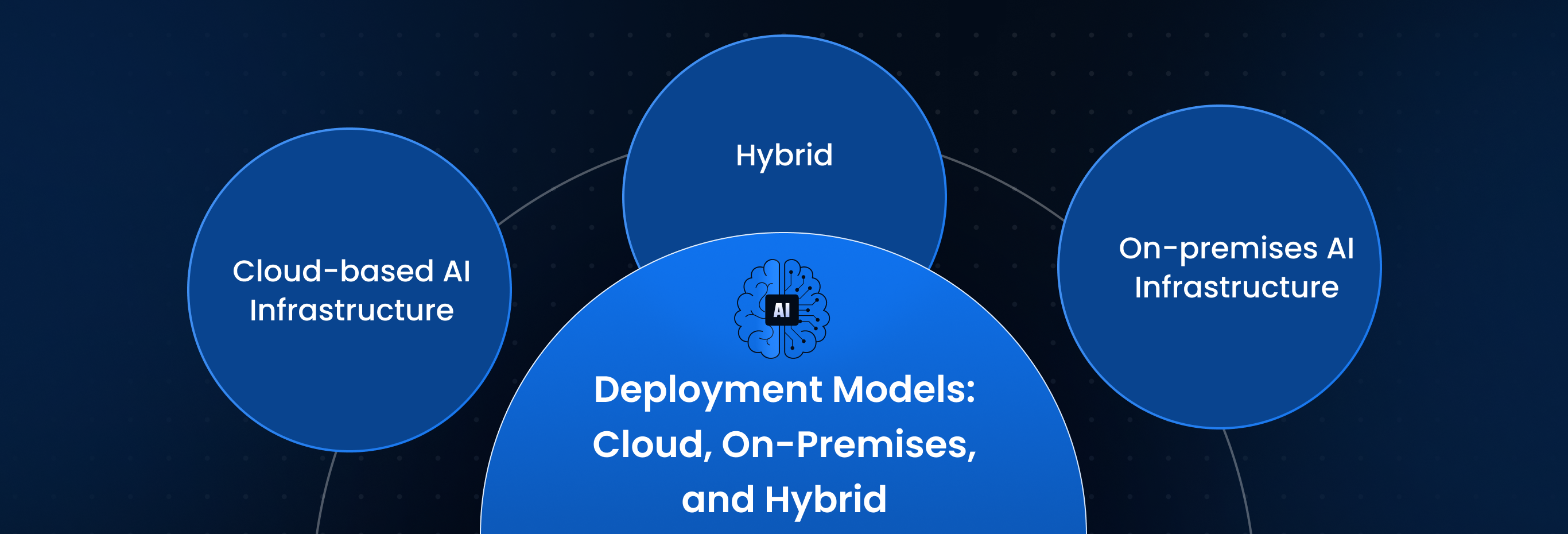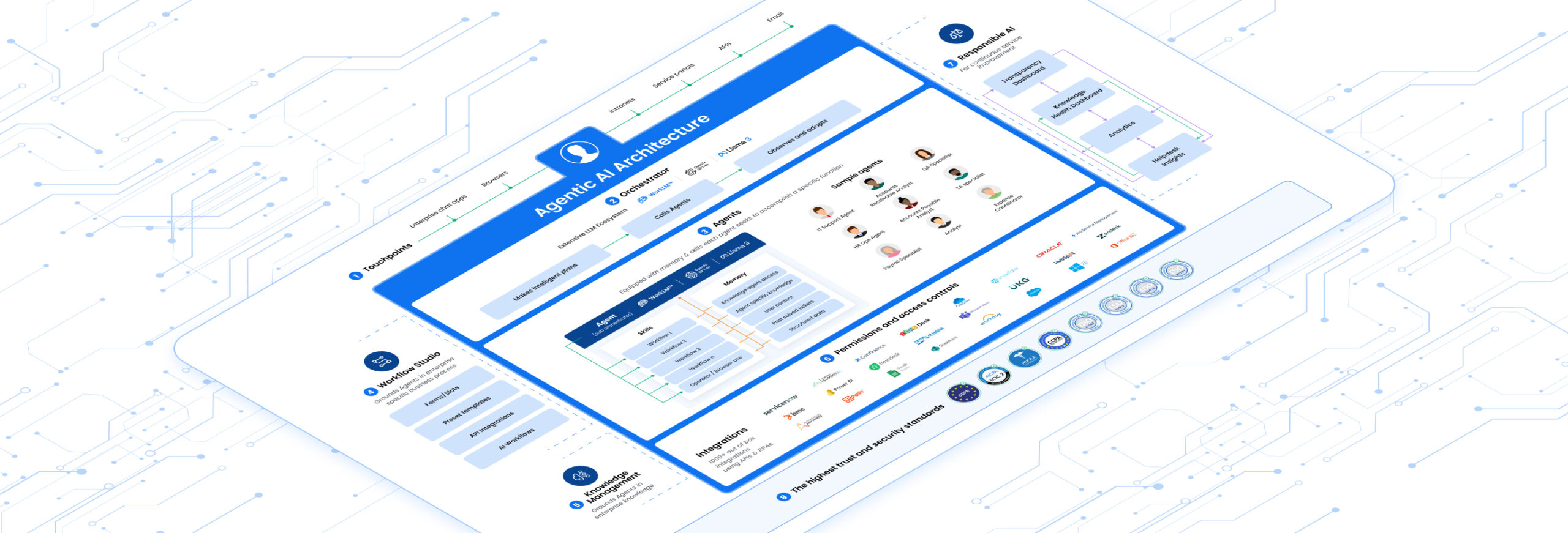Introduction
Ever wonder how an AI system can instantly understand a complex IT ticket, find the right solution, and resolve the issue in seconds? The magic isn’t just in the AI model; it’s in the powerful foundation it runs on. This foundation is what we call AI infrastructure. Think of it as the specialized highway system built for the supercars of artificial intelligence. While your traditional IT setup is a network of city streets, great for everyday traffic, it can’t handle the speed and unique needs of AI. This guide will explain what is AI infrastructure and why it’s becoming the most critical technology investment for forward-thinking leaders like you.
Understanding What Is AI Infrastructure
At its core, AI infrastructure is the complete set of hardware and software technologies required to build, train, deploy, and manage artificial intelligence applications. It’s the engine room that powers everything from the chatbot that greets your employees to the complex algorithms that predict system outages. Unlike traditional IT, which is designed to run predictable, pre-programmed applications, AI infrastructure is built for the demanding, data-intensive workloads of machine learning.
It’s a dynamic environment designed for experimentation, learning, and constant improvement. This specialized setup ensures your AI tools have the massive computing power and lightning-fast access to data they need to function. Consequently, it allows AI to perform tasks that are simply impossible with standard systems, making your entire enterprise more efficient and responsive.
Core Components of AI Infrastructure
To truly grasp what is AI infrastructure, you need to understand its key building blocks. These components work together to create a high-performance environment where AI can thrive.
First, you have compute power. AI, especially deep learning, requires an immense amount of processing capability. This is typically provided by specialized chips like Graphics Processing Units (GPUs) or Tensor Processing Units (TPUs), which can handle millions of calculations simultaneously. Think of them as the V12 engines for your AI models.
Second is high-speed data storage and networking. AI models feast on data. Therefore, the infrastructure needs fast storage solutions, like flash arrays, and high-bandwidth networking to feed that data to the compute engines without any bottlenecks. It’s like having a super-wide fuel line that never runs dry.
Finally, you have the AI software platform. This includes the frameworks (like TensorFlow or PyTorch), management tools, and machine learning operations (MLOps) systems that allow your data scientists and engineers to build, train, and manage the AI models throughout their entire lifecycle. This software layer brings all the hardware components together into a cohesive, functional system.
AI Infrastructure vs. Traditional IT Infrastructure
It’s a common question: “Can’t I just run AI on my current systems?” The short answer is no, not effectively. Understanding the difference between AI infrastructure vs. traditional IT infrastructure highlights why a specialized approach is necessary for success.
Traditional IT is built for stability and predictability. It runs applications like your email server or accounting software, where the processes are clearly defined and the workloads are relatively consistent. It’s optimized for handling transactions and storing structured data in organized databases.
On the other hand, AI infrastructure is built for the chaos of discovery. It needs to handle massive, unstructured datasets like text from support tickets or system logs. Moreover, its primary job is not just to run programs but to train models, a process that involves iterative experimentation and enormous computational loads that would overwhelm a traditional system. While your old IT setup is like a reliable freight train on a fixed track, AI infrastructure is like a fleet of all-terrain vehicles, capable of exploring new paths and adapting to any landscape.
Why AI Infrastructure Matters for Enterprises
Investing in AI infrastructure is no longer a luxury; it’s a competitive necessity, especially for managing enterprise service desks. The right foundation directly impacts your ability to improve efficiency, enhance the employee experience, and drive tangible business results. For leaders overseeing ticketing systems, this is where the rubber meets the road.
A robust AI platform allows you to deploy sophisticated AI agents that can automate the resolution of common IT, HR, and Finance tickets. This frees up your human support staff to focus on more complex, high-value issues. Furthermore, it enables predictive capabilities. Imagine an AI that analyzes system logs to flag a potential server failure before it happens, automatically creating a ticket and initiating a fix. This proactive approach dramatically reduces downtime and boosts productivity across the organization. Ultimately, solid AI infrastructure is the key that unlocks these transformative benefits and delivers a measurable return on investment.
How AI Infrastructure Works
So, how does AI infrastructure work in practice? It follows a cyclical process often referred to as the machine learning lifecycle. This journey begins with data.
The infrastructure first ingests vast amounts of data from various sources, such as historical support tickets, knowledge base articles, and chat logs. This data is then cleaned, organized, and stored in a high-performance storage system. Next, in the training phase, data scientists use the powerful compute resources (GPUs) to run algorithms against this data, teaching an AI model to recognize patterns and make decisions. This is an incredibly intensive process that can take hours or even days.
Once the model is trained, the infrastructure deploys it into a live environment where it can start interacting with users and resolving tickets. But the work doesn’t stop there. The system continuously monitors the model’s performance through a process called MLOps, collecting new data and user feedback. Periodically, the model is retrained with this new information to ensure it becomes smarter and more accurate over time. This continuous loop of learning and improvement is the hallmark of a well-designed AI infrastructure.
Challenges in Building AI Infrastructure

While the benefits are clear, building a robust AI infrastructure comes with its own set of challenges. It’s not as simple as buying a few powerful servers. One of the biggest hurdles is the complexity and cost. The specialized hardware and software required can be expensive to acquire and maintain.
Another significant challenge is the talent gap. Finding and retaining professionals with the skills to design, build, and manage these complex systems is difficult. Data scientists, machine learning engineers, and MLOps specialists are in high demand.
Finally, there’s the issue of scalability and management. As your AI initiatives grow, your infrastructure must be able to scale seamlessly to handle more data and more complex models. Managing this ever-evolving environment requires sophisticated tools and processes to avoid spiraling costs and operational chaos. These challenges are why many enterprises choose to partner with specialized providers who have already mastered the art of building and optimizing AI infrastructure.
Deployment Models: Cloud, On-Premises, and Hybrid
 When deciding how to build your AI infrastructure, you have three main deployment models to consider. Each has its own advantages, and the right choice depends on your specific needs for security, cost, and control.
When deciding how to build your AI infrastructure, you have three main deployment models to consider. Each has its own advantages, and the right choice depends on your specific needs for security, cost, and control.
Cloud-based AI infrastructure offers incredible flexibility and scalability. Providers like Amazon Web Services, Google Cloud, and Microsoft Azure give you access to cutting-edge AI hardware and software on a pay-as-you-go basis. This lowers the upfront investment and allows you to scale resources up or down as needed.
On-premises AI infrastructure involves building and managing the entire system in your own data center. This approach provides maximum control over your data and security, which can be critical for organizations in highly regulated industries. However, it requires a significant capital investment and a skilled team to manage it.
The hybrid model offers a popular middle ground. It combines the security and control of an on-premises solution with the scalability and flexibility of the cloud. For instance, you might train your AI models on sensitive data in your private data center but deploy them in the cloud to serve employees globally. This balanced approach is often the most practical choice for large enterprises.
How Leena AI Optimizes AI Infrastructure
At Leena AI, we live and breathe this topic because our Agentic AI platform is built upon a highly optimized AI infrastructure. We understand the challenges of building these systems from the ground up, which is why we’ve done the heavy lifting for you. We provide a sophisticated, pre-built infrastructure as part of our Software-as-a-Service solution, allowing you to reap the benefits of AI without the complexity and cost of building it yourself.
Leena AI’s Pioneering Approach to AI Infrastructure
Our platform is designed specifically for enterprise service management. We have fine-tuned every component, from our data pipelines to our model deployment processes, to handle the unique demands of resolving IT, HR, and Finance tickets. Leena AI’s multi-tenant cloud architecture ensures you get enterprise-grade security, scalability, and performance without the headache of managing the underlying hardware and software.
For example, when an employee has an IT issue, our AI Agent doesn’t just follow a script. It accesses multiple enterprise systems, understands the user’s context, and takes action to resolve the issue autonomously. This is only possible because our AI infrastructure is built for real-time data processing and complex workflow orchestration. We turn a massive capital expense and operational burden into a simple, predictable operating cost, enabling you to focus on what you do best: running your business.
Frequently Asked Questions (FAQs)
What is AI infrastructure in simple terms?
In simple terms, what is AI infrastructure is the complete technology toolkit, including powerful computers, fast storage, and specialized software, that is purpose-built to run demanding artificial intelligence applications efficiently and at scale.
Why can't I use my existing IT setup for AI?
Traditional IT infrastructure isn’t designed for the massive data processing and iterative learning workloads that AI requires. Using it would be like trying to run a Formula 1 race on a neighborhood street; it’s slow, inefficient, and you won’t get the performance you need.
What is the most important component of AI infrastructure?
While all components are crucial, the specialized compute power, often from GPUs, is arguably one of the most important. It provides the raw processing muscle needed for the complex calculations involved in training AI models.
How does the cloud affect AI infrastructure?
The cloud has democratized access to AI infrastructure. It allows companies of all sizes to leverage world-class AI tools and supercomputing power without the massive upfront investment in hardware, making it easier than ever to start AI projects.
What is MLOps and why does it matter for AI infrastructure?
MLOps, or machine learning operations, is a set of practices for managing the entire lifecycle of an AI model. It is a critical part of a modern AI infrastructure because it automates and streamlines the process of deploying, monitoring, and retraining models, ensuring they remain accurate and effective over time.
Does my company need to build its own AI infrastructure?
Not necessarily. For many enterprises, especially when focusing on applications like service desks, partnering with a vendor like Leena AI is more effective. This approach allows you to leverage an optimized, pre-built AI infrastructure and focus on business outcomes rather than technical complexities.
How do I measure the return on investment of my AI infrastructure?
You can measure the return on investment by tracking key performance indicators like reduced ticket resolution times, improved employee satisfaction scores, lower operational costs in your service desk, and increased productivity from both your support staff and the employees they serve.













